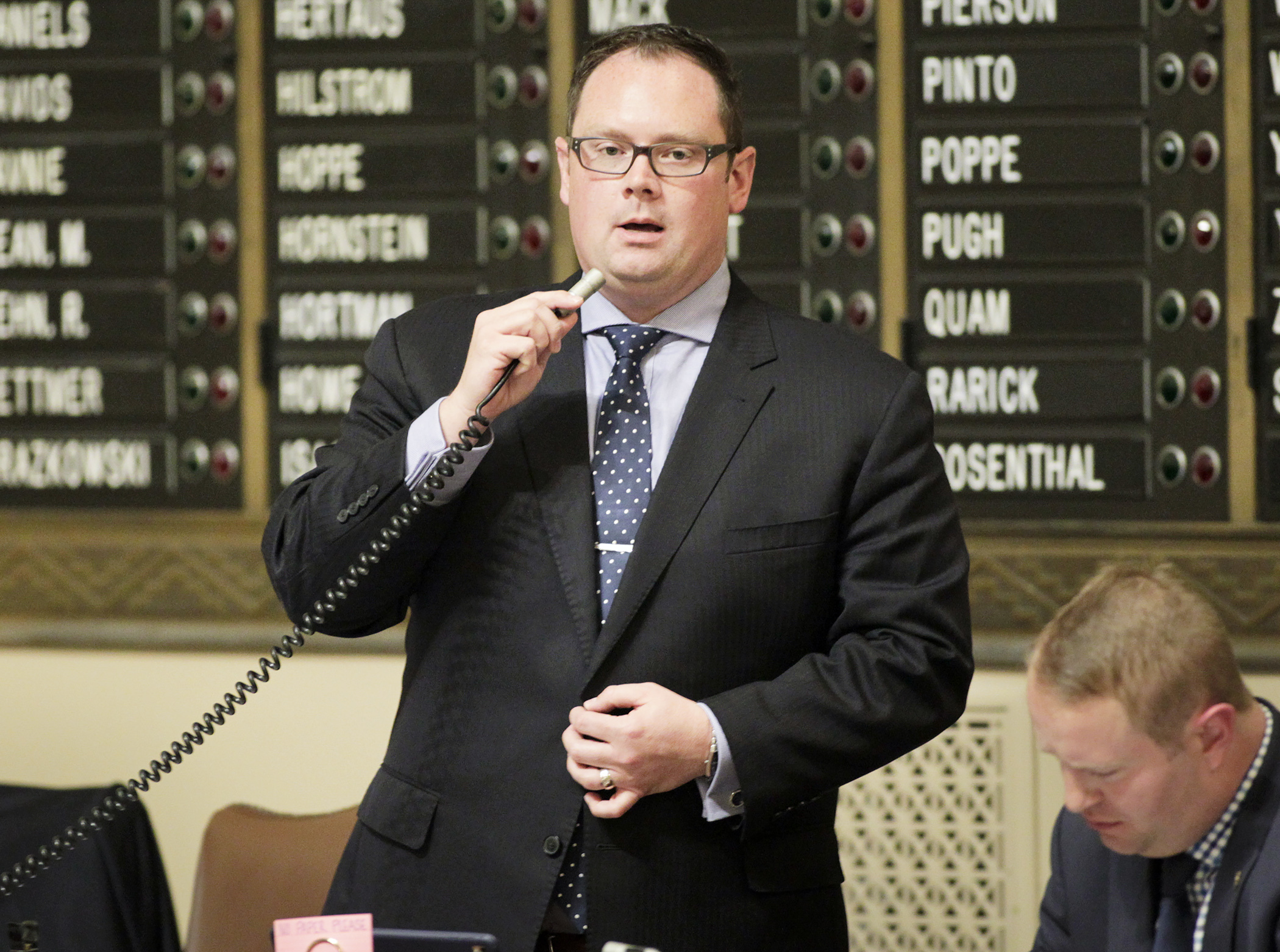House moves Minnesota closer to presidential primary

Minnesota’s move to a presidential primary election is nearly complete after the House voted 106-23 to pass HF3549/SF2985* Friday.
Sponsored by Rep. Tim Sanders (R-Blaine) and Sen. Ann Rest (DFL-New Hope), the bill, which was amended, now heads back to the Senate.
It would establish a presidential primary election that would be in place during the 2020 presidential race.
Efforts to move from the current caucus system intensified this spring after long lines and other logistical headaches plagued the presidential caucus. A primary would allow voters to come and go throughout the day rather than congregating at a specific time.
“This bill moves Minnesota to presidential primary,” Sanders said. “I think we’re going to have a very successful change.”
Minnesota’s presidential primary would be held the first Tuesday in March during the year preceding a presidential election, or on a different date if agreed to by the party chairs. This would make March 3, 2020 the date of the state’s first presidential primary.
The bill would also continue the precinct caucus system, if the parties chose to continue it, and the primary election for other federal, state and local offices would continue to be held in August.
The provision of the bill that caused the most debate Friday is the requirement that voters certify their agreement with the party in whose primary they choose to vote. This declaration would be recorded and available in the public record.
Rep. Tina Liebling (DFL-Rochester) successfully offered an amendment to let voters know that when they take a ballot to vote in the primary, their ballot choice would be publicly available.
“Many Minnesotans are very uncomfortable with making their party preference public,” Liebling said.
An amendment offered by Rep. Pat Garofalo (R-Farmington) that would give voters the option of not having their ballot preference known was defeated.
“At the end of the day, it’s none of the government’s business what party I’m voting for,” Garofalo said.
Related Articles
Search Session Daily
Advanced Search OptionsPriority Dailies
Ways and Means Committee OKs proposed $512 million supplemental budget on party-line vote
By Mike Cook Meeting more needs or fiscal irresponsibility is one way to sum up the differences among the two parties on a supplemental spending package a year after a $72 billion state budg...
Meeting more needs or fiscal irresponsibility is one way to sum up the differences among the two parties on a supplemental spending package a year after a $72 billion state budg...
Minnesota’s projected budget surplus balloons to $3.7 billion, but fiscal pressure still looms
By Rob Hubbard Just as Minnesota has experienced a warmer winter than usual, so has the state’s budget outlook warmed over the past few months.
On Thursday, Minnesota Management and Budget...
Just as Minnesota has experienced a warmer winter than usual, so has the state’s budget outlook warmed over the past few months.
On Thursday, Minnesota Management and Budget...